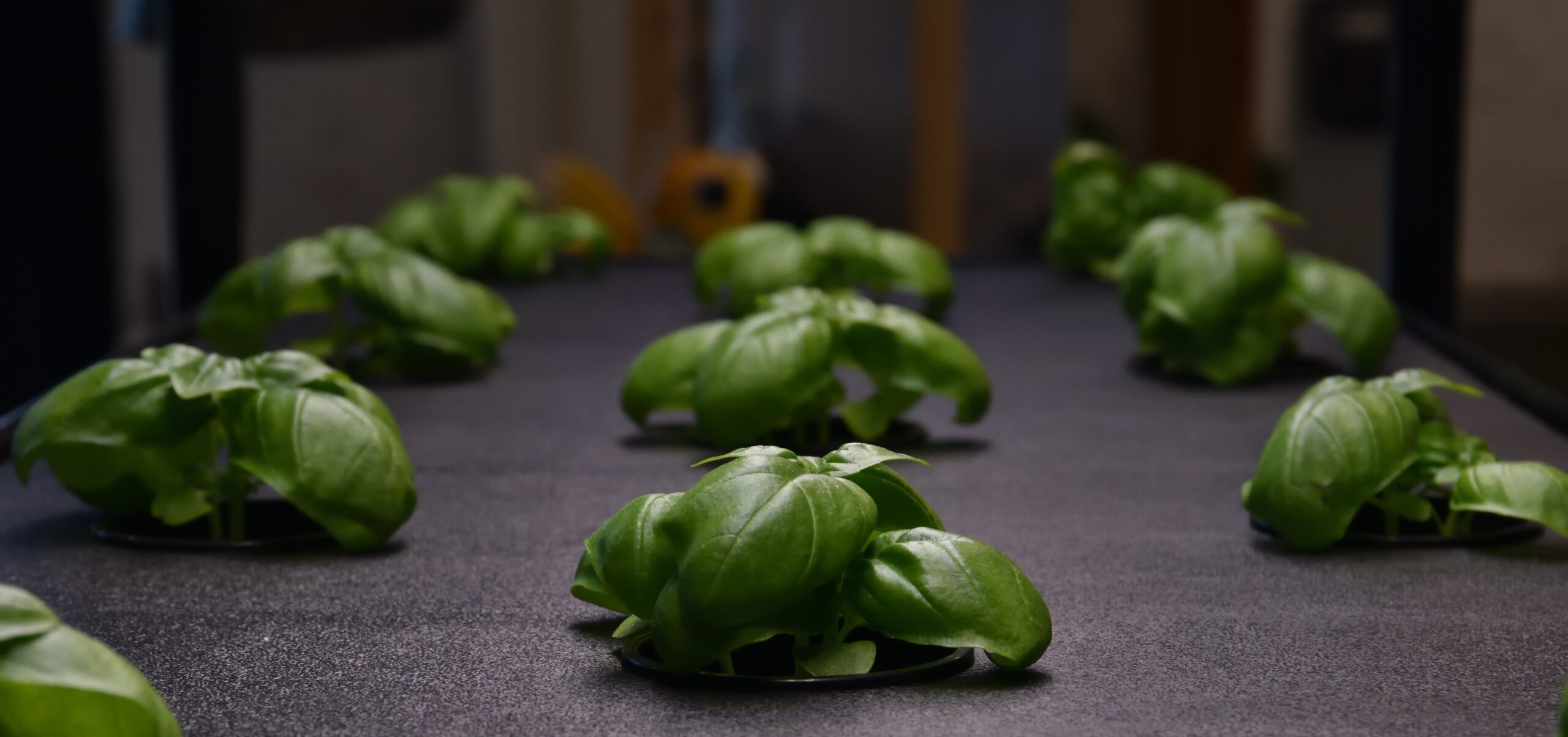If you’re curious about exploring the world of hydroponics and want to learn how to create your own fertilizer, you’ve come to the right place. In this article, we will guide you through the process of making your own hydroponic fertilizer from scratch. Whether you’re an experienced gardener looking to try your hand at a new growing method or a beginner seeking to nurture plants without soil, we’ve got you covered. So, grab your gardening gloves and get ready to embark on an exciting adventure of DIY hydroponic fertilizers.
Choosing Nutrients for Hydroponics
Understanding Macronutrients
When it comes to hydroponics, choosing the right nutrients is crucial for the success of your plants. Macronutrients are essential elements that plants need in large quantities to thrive. The three primary macronutrients are nitrogen (N), phosphorus (P), and potassium (K), commonly known as N-P-K. Nitrogen is necessary for leaf development, phosphorus promotes root growth, and potassium helps with overall plant health and disease resistance. Understanding the roles of these macronutrients will help you select the right fertilizer for your hydroponic system.
Understanding Micronutrients
In addition to macronutrients, plants also require micronutrients, albeit in smaller amounts. These micronutrients include elements like iron, manganese, zinc, and copper, among others. While they may be needed in smaller quantities, micronutrients play a crucial role in various physiological processes within the plant. They aid in enzyme activation, photosynthesis, and overall plant growth. It’s important to ensure that your hydroponic fertilizer includes a balanced blend of both macronutrients and micronutrients to support optimal plant growth and development.
Finding the Right N-P-K Ratio
Different plants have different nutrient requirements, so it’s essential to determine the appropriate N-P-K ratio for your hydroponic fertilizer. This ratio is usually displayed on fertilizer labels as a set of numbers, such as 10-10-10 or 20-10-10, representing the percentage of nitrogen, phosphorus, and potassium, respectively. Leafy greens, for example, often require higher nitrogen levels, while flowering plants may benefit from higher phosphorus levels. Understanding the specific needs of your plants will help you determine the most suitable N-P-K ratio for your hydroponic system.
Considering Supplemental Nutrients
While macronutrients and micronutrients are crucial for plant growth, there may be times when your plants require additional nutrients beyond what is typically provided in a standard hydroponic fertilizer. These supplemental nutrients can include things like calcium, magnesium, and sulfur, which are necessary for various physiological processes in plants. It’s important to regularly monitor your plants for any signs of nutrient deficiencies and provide the appropriate supplements as needed to ensure healthy and robust growth.
Organic vs. Synthetic Hydroponic Fertilizers
Understanding the Difference
When choosing a hydroponic fertilizer, you’ll come across two main options: organic and synthetic fertilizers. Organic fertilizers are derived from natural sources, such as compost, manure, or bone meal. They are typically slow-release, providing a steady supply of nutrients to the plants over time. On the other hand, synthetic fertilizers are chemically formulated to provide precise nutrient ratios and are often water-soluble for quick nutrient uptake by plants. Understanding the difference between these two types of fertilizers will help you make an informed decision for your hydroponic system.
Benefits of Organic Fertilizers
One of the significant advantages of using organic fertilizers in hydroponics is that they contribute to the overall health of the soil or growing medium. Organic fertilizers improve soil structure, increase microbial activity, and promote long-term soil fertility. They also tend to be less prone to causing nutrient imbalances or toxicity, as their release is gradual. Organic fertilizers are a favored choice, particularly for those who prioritize sustainability and natural gardening practices.
Benefits of Synthetic Fertilizers
Synthetic fertilizers, while often criticized for their environmental impact, offer some advantages in hydroponics. Since hydroponic systems rely on nutrient solutions, synthetic fertilizers can provide precise control over nutrient ratios, ensuring plants receive the exact nutrients they need. Additionally, synthetic fertilizers are typically readily available, affordable, and can result in faster plant growth due to their water-soluble nature. Some hydroponic growers choose synthetic fertilizers for their convenience and the ability to customize nutrient solutions for different crop stages.
Creating a Homemade Hydroponic Fertilizer Solution
Understanding the Basics
Making your own hydroponic fertilizer solution can be a cost-effective and customizable approach for your plants’ nutrient needs. Before you start, it’s essential to understand the basics of nutrient requirements, pH levels, and nutrient ratios. Research the specific needs of your plants to ensure you provide the correct nutrients in the right proportions to achieve optimal growth.
Using Water-Soluble Fertilizers
Water-soluble fertilizers are commonly used in hydroponics as they dissolve easily in water, making it simple for plants to absorb the nutrients. These fertilizers come in a variety of formulations, including both synthetic and organic options. When selecting water-soluble fertilizers, ensure they are suitable for hydroponic use and contain all the necessary macronutrients and micronutrients your plants require.
Choosing the Right Ingredients
Creating a homemade hydroponic fertilizer solution gives you the opportunity to choose the specific ingredients that suit your preferences and plant needs. You can use a combination of water-soluble fertilizers, organic amendments, and supplements to achieve the desired nutrient balance. Some popular ingredients include bat guano, worm castings, kelp extract, fish emulsion, and Epsom salt. It’s important to research each ingredient’s nutrient content and the recommended application rates for hydroponic use.
Mixing Ratios and Recipes
To create a homemade hydroponic fertilizer solution, you’ll need to mix the ingredients in the right ratios. This ensures a balanced nutrient solution that meets the needs of your plants. Experimenting with different ratios and recipes can help you find the perfect combination for optimal plant growth. Keep track of your mixtures and assess the results to refine your recipe over time.
Adjusting pH Levels
pH levels play a crucial role in hydroponic systems as they affect nutrient availability to the plants. Most plants prefer slightly acidic pH levels between 5.5 and 6.5. When making your own hydroponic fertilizer solution, regularly monitor and adjust the pH levels to ensure they remain within the desired range. pH testing kits are readily available and can help you maintain the optimal pH for your plants’ nutrient uptake and overall health.
Using Natural Ingredients for Homemade Hydroponic Fertilizer
Composting for Nutrient-Rich Fertilizer
Composting is an excellent way to create nutrient-rich organic fertilizer for your hydroponic system. It involves decomposing organic matter, such as kitchen scraps, yard waste, and plant trimmings, to produce a nutrient-rich compost. Compost provides a wide range of essential nutrients for plant growth and enhances soil structure and water holding capacity. You can incorporate compost into your hydroponic system by brewing compost tea or using it as a top dressing.
Harnessing the Power of Worm Castings
Worm castings, also known as vermicompost, are another natural ingredient that can greatly benefit your hydroponic plants. Worm castings are rich in organic matter and contain beneficial microorganisms that improve soil health and nutrient availability. When using worm castings in a hydroponic system, you can create a worm casting tea by steeping them in water. This tea can be used as a nutrient-rich liquid fertilizer or foliar spray, providing your plants with an extra nutritional boost.
Utilizing Seaweed and Kelp Extracts
Seaweed and kelp extracts are prized natural ingredients for their numerous benefits in hydroponics. These extracts are rich in trace minerals, growth hormones, and natural plant stimulants. When used in hydroponic systems, seaweed and kelp extracts provide essential micronutrients, enhance root development, improve nutrient uptake, and increase plant resistance to stress. You can find commercially available liquid seaweed and kelp extracts to incorporate into your homemade hydroponic fertilizer solution.
Exploring Fish Emulsion and Fish Hydrolysate
Fish emulsion and fish hydrolysate are valuable organic ingredients derived from fish waste. They are rich sources of nitrogen, phosphorus, and trace elements necessary for plant growth. Fish hydrolysate undergoes enzymatic digestion to break down fish solids into highly available nutrients, while fish emulsion is a less refined liquid form of the same. Both fish emulsion and fish hydrolysate can be diluted and used as a liquid fertilizer to provide your hydroponic plants with a nutrient-rich boost.
Incorporating Epsom Salt and Magnesium Sulfate
Epsom salt, or magnesium sulfate, is a commonly used additive in hydroponic systems to supplement magnesium and sulfur. Magnesium is a critical nutrient for chlorophyll production and overall plant growth. Sulfur enhances plant vigor and helps with the synthesis of important plant compounds. Including Epsom salt in your homemade hydroponic fertilizer solution can help ensure your plants receive these essential nutrients. However, it’s important to use it sparingly, as excessive amounts can lead to nutrient imbalances.
Making Liquid Hydroponic Fertilizer
Recipe for a Basic Liquid Fertilizer
Creating a basic liquid fertilizer for your hydroponic system is relatively easy. One common recipe includes a combination of water-soluble fertilizers, such as a balanced N-P-K fertilizer, along with the necessary micronutrients. Follow the manufacturer’s instructions to determine the appropriate ratios and mix the ingredients thoroughly in water. Adjust the pH levels as needed to ensure optimal nutrient uptake.
Adding Supplements for Optimal Growth
While a basic liquid fertilizer can provide adequate nutrition for your plants, adding supplements can further enhance growth and overall plant health. Supplements can include organic additives like fish emulsion, seaweed extract, or worm castings, as well as mineral-based supplements like Epsom salt or calcium carbonate. These supplements provide additional nutrients and beneficial compounds that can promote optimal growth and vitality in your hydroponic plants.
Storing and Using Liquid Fertilizer
When making your own liquid hydroponic fertilizer, it’s important to store it properly to maintain its efficacy. Store the fertilizer solution in airtight containers away from direct sunlight and extreme temperatures. This will help preserve the nutrient content and prevent degradation. When using the fertilizer, ensure proper dilution according to the specific needs of your plants, and apply it to your hydroponic system following recommended guidelines or your own established routine.
Creating Solid Hydroponic Fertilizer
Understanding Pelletized Fertilizers
Pelletized fertilizers are solid forms of fertilizer that have been compacted into small pellets. These pellets are designed to slowly release nutrients over time, providing a continuous supply of nutrition to the plants. Pelletized fertilizers can be convenient for certain hydroponic systems, as they can be easily incorporated into the growing medium or placed directly in the water to slowly dissolve and release nutrients. They can be particularly beneficial for container gardening or systems with limited space.
Creating Fertilizer Tablets or Capsules
If you prefer a more controlled and precise nutrient release in your hydroponic system, you can create fertilizer tablets or capsules. This allows you to customize the nutrient ratios and ensure that your plants receive the nutrients they need at a consistent rate. Homemade fertilizer tablets or capsules can be made by compressing a mixture of nutrient powders and binding agents into the desired shape. Once prepared, these tablets or capsules can be placed in the growing medium or water to provide a slow and controlled release of nutrients.
Using Slow-Release Fertilizer Options
Slow-release fertilizers are formulated to provide a steady supply of nutrients over an extended period. These fertilizers are typically high in nitrogen and other essential elements, enclosed within a coating that slowly breaks down when exposed to moisture. Slow-release fertilizers offer convenience and stability, as they require less frequent application and reduce the risk of nutrient imbalances or leaching. When using slow-release fertilizers in hydroponics, choose options specifically designed for water-based systems to ensure compatibility and optimal nutrient release.

Understanding Nutrient Deficiencies and Solutions
Identifying Common Nutrient Deficiencies
Nutrient deficiencies can occur in hydroponics when plants do not receive adequate amounts of essential nutrients. Common signs of nutrient deficiencies include stunted growth, yellowing or browning of leaves, and reduced overall plant health. It’s important to monitor your plants closely for any signs of nutrient deficiencies and take prompt action to address the issue. Regular observation and familiarization with symptoms will help you identify and diagnose specific nutrient deficiencies.
Treating Nitrogen Deficiency
Nitrogen deficiency is a commonly encountered issue in hydroponics and can lead to plants with pale, yellowing leaves and stunted growth. To remedy nitrogen deficiency, increase the nitrogen levels in your hydroponic fertilizer solution. Consider using organic nitrogen sources like fish emulsion or worm castings, or adjust the ratios of your water-soluble synthetic fertilizers to provide a higher concentration of nitrogen. Regular and balanced nitrogen application will help maintain healthy and vigorous plant growth.
Addressing Phosphorus Deficiency
Phosphorus deficiency manifests as dark green or purplish leaves and inhibited root growth. To address this deficiency, increase the phosphorus levels in your hydroponic fertilizer solution. Utilize phosphorus-rich additives like bone meal or rock phosphate, or adjust your water-soluble fertilizer ratios to ensure sufficient phosphorus supply. Providing adequate phosphorus will encourage robust root development and overall plant vitality.
Correcting Potassium Deficiency
Potassium deficiency can result in weak stems, yellowing or curling of leaves, and reduced fruit or flower production. To correct potassium deficiency, increase the potassium levels in your hydroponic fertilizer solution. Potassium-rich additives like potassium sulfate or potassium hydroxide can be added, or you can adjust the ratios of your water-soluble fertilizers to increase potassium concentration. Adequate potassium supply will enhance overall plant resilience, flowering, and fruiting.
Managing Calcium and Magnesium Deficiencies
Calcium and magnesium deficiencies can lead to problems like blossom end rot or stunted growth. These deficiencies are often associated with pH imbalances or inadequate nutrient absorption. To address calcium and magnesium deficiencies, consider using supplements like calcium nitrate or magnesium sulfate in your hydroponic fertilizer solution. Additionally, adjusting the pH levels and ensuring optimal nutrient uptake can help prevent and manage these deficiencies effectively.
Preventing Micronutrient Deficiencies
Micronutrient deficiencies can be challenging to diagnose, as they exhibit a wide range of symptoms depending on the specific element lacking. These micronutrients include iron, manganese, zinc, copper, and others. To prevent micronutrient deficiencies, it’s essential to ensure your hydroponic fertilizer solution contains a balanced blend of micronutrients. Utilize supplements like chelated micronutrient mixtures or incorporate natural ingredients like seaweed extract to provide your plants with adequate micronutrient nutrition.
Monitoring and Adjusting Fertilizer Levels
Importance of Regular Monitoring
Monitoring the nutrient levels in your hydroponic system is crucial for maintaining proper plant health and growth. Regularly assessing the electrical conductivity (EC) and pH levels of your nutrient solution provides valuable insights into nutrient availability and uptake. Monitoring also allows you to detect any potential nutrient imbalances or deficiencies early on, enabling timely intervention and adjustments.
Measuring Electrical Conductivity (EC)
Electrical conductivity (EC) is a measure of the concentration of dissolved salts in your hydroponic nutrient solution. It provides an indication of the total nutrient content and helps assess the overall strength of the solution. Regularly measuring the EC helps ensure that your plants receive the appropriate nutrient levels and aids in adjusting the fertilizer strength based on plant requirements.
Testing pH Levels
Measuring and maintaining the appropriate pH levels in your hydroponic system is crucial for nutrient availability and absorption. Most plants prefer slightly acidic pH levels between 5.5 and 6.5. Regularly testing the pH of your nutrient solution using pH testing kits or pH meters allows you to make any necessary adjustments to ensure optimal nutrient uptake by your plants.
Interpreting Leaf Tissue Analysis
Leaf tissue analysis involves analyzing the nutrient content of plant leaves to assess the plant’s nutritional status. This analysis can provide valuable insights into nutrient deficiencies or imbalances that may not be apparent through visual symptoms alone. Conducting leaf tissue analysis periodically throughout the growing season can help fine-tune your nutrient management strategies for optimal plant growth.
Maintaining Proper Nutrient Balance
Maintaining a proper nutrient balance is essential for the overall health and productivity of your hydroponic plants. Regular monitoring, adjustments based on EC and pH levels, and the use of nutrient supplements allow you to maintain a balanced nutrient solution. By ensuring that your plants receive the right nutrients in the right proportions, you can maximize their growth potential and minimize the risk of nutrient-related problems.
Tips for Successful Hydroponic Fertilizer Use
Start with a Balanced Nutrient Solution
To set your hydroponic plants up for success, begin by establishing a well-balanced nutrient solution. Understand the nutritional requirements of your specific plants and select a fertilizer or create a homemade solution that provides the necessary macronutrients and micronutrients in the appropriate ratios. Starting with a properly balanced solution will give your plants the foundation they need to thrive.
Follow Manufacturer’s Instructions
If you opt for commercially available hydroponic fertilizers, it’s essential to follow the manufacturer’s instructions carefully. These instructions provide specific guidelines for mixing ratios, application rates, and any additional recommendations for optimal plant growth. Following these instructions will help you avoid nutrient imbalances, overfertilization, and potential damage to your plants.
Monitor Plant Growth and Health
Regular monitoring of plant growth and health is key to successful hydroponic fertilizer use. Observe your plants for any signs of nutrient deficiencies, such as yellowing leaves, stunted growth, or reduced yields. Catching and addressing these issues early can significantly prevent further damage and promote healthy growth.
Avoid Overfertilization
It can be tempting to provide plants with more nutrients, thinking it will result in better growth. However, overfertilization can lead to nutrient imbalances, nutrient toxicity, and even plant damage. Avoid overfertilization by carefully measuring and following recommended application rates. Regular monitoring of EC and pH levels will also help you gauge nutrient intensity.
Maintain Proper pH and EC Levels
Maintaining the optimal pH and EC levels in your hydroponic system is crucial for nutrient availability and uptake. Adjust the pH levels as needed to ensure your plants can efficiently absorb nutrients. Regularly measure and adjust the EC levels to meet the nutrient requirements of your plants. Striving for an ideal balance of pH and EC will optimize nutrient absorption and support healthy plant growth.
Flush the System Regularly
To prevent nutrient buildup and the risk of nutrient imbalances, it’s important to flush your hydroponic system regularly. Flushing involves running plain water through the system to remove excess salts and accumulated residues. Flushing helps prevent salt buildup in the growing medium and promotes nutrient absorption, ensuring that your plants receive fresh, well-balanced nutrients.
Regularly Check for Clogged Filters or Drip Emitters
Maintaining clean and functional filters and drip emitters is essential for proper nutrient delivery in a hydroponic system. Clogged filters or emitters can disrupt the flow of nutrient solution, leading to nutrient deficiencies in certain areas or overfertilization in others. Regularly inspect and clean these components to ensure consistent and even nutrient distribution to all plants.
Conclusion
Choosing the right nutrients and understanding how to create and adjust hydroponic fertilizer solutions are essential skills for any hydroponic grower. By understanding the importance of macronutrients and micronutrients, the differences between organic and synthetic fertilizers, and the benefits of homemade fertilizers, you can tailor your nutrient management to meet the specific needs of your plants. With proper monitoring and adjustments, you can ensure healthy and thriving plants in your hydroponic system.







